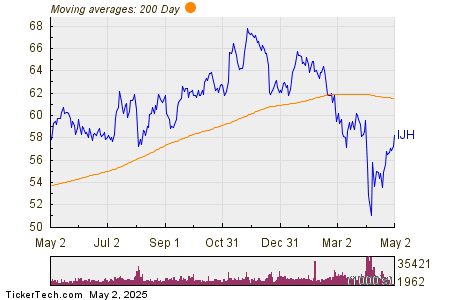Coffee Prices Dip Due to Tariffs, Weather Concerns Impacting Supply
On Thursday, July arabica coffee (KCN25) closed down -16.10 (-4.02%), while July ICE robusta coffee (RMN25) saw a decline of -243 (-4.53%). This marks a significant drop for both coffee types, reaching their lowest points in a week.
The decline in coffee prices stems from worries about increasing tariffs. Major global importers, including Starbucks, Hershey, and Mondelez International, expressed concerns that the U.S.’s baseline 10% tariff on imports would lead to higher prices, thereby impacting sales volumes.
Weather Conditions Weighing on Prices
Adding to the bearish sentiment, Brazil has recently experienced above-normal rainfall, which has improved soil moisture levels. According to Somar Meteorologia, Minas Gerais, Brazil’s key arabica coffee growing region, received 38.7 mm of rain in the week ending April 19—490% of the historical average.
Earlier in the week, arabica coffee prices had risen to a 2½-month high, and robusta prices reached a one-month high. This spike was attributed to concerns over a smaller Brazilian coffee crop. Rabobank recently predicted that Brazil’s 2025/26 arabica coffee crop would decrease by -13.6% year-over-year to 38.1 million bags, primarily due to dry weather in critical growing areas. Conversely, robusta output is expected to increase by +7.3% year-over-year, reaching a record 24.7 million bags.
Mixed Supply Signals
Despite supply concerns, the current coffee supply situation remains mixed. Data from April 9 revealed that Brazil’s green coffee exports dropped by -26% year-over-year to 2.95 million bags. Meanwhile, Brazil’s government crop forecasting agency, Conab, expects the country’s overall coffee crop for 2025/26 to decline by -4.4% year-over-year to a three-year low of 51.81 million bags. Conab also revised its 2024 coffee crop estimate down by -1.1% to 54.2 million bags.
In terms of inventories, ICE-monitored robusta coffee stocks recently fell to a four-month low of 4,225 lots, while ICE-monitored arabica inventories increased to a 2½-month high of 826,304 bags as of Monday.
Long-Term Weather Impacts
The impact of last year’s dry El Niño conditions could cause lasting damage to coffee crops across South and Central America. Brazil has been experiencing its driest weather since 1981, which has negatively affected coffee trees during their crucial flowering stage and reduced expectations for the 2025/26 arabica crop. Meanwhile, Colombia, the world’s second-largest arabica producer, is slowly recovering from drought conditions caused by El Niño.
Robusta coffee production is facing challenges as well. Vietnam’s output for the 2023/24 crop year has dropped by -20% to 1.472 MMT, the smallest harvest in four years. Recent statistics from Vietnam’s General Statistics Office indicate that coffee exports decreased by -17.1% year-over-year to 1.35 MMT. Additionally, the Vietnam Coffee and Cocoa Association revised its 2024/25 production estimate down to 26.5 million bags from 28 million.
Global Coffee Export Trends
However, large global coffee exports may also exert downward pressure on prices. Conab reported that Brazil’s 2024 coffee exports surged by +28.8% year-over-year to a record 50.5 million bags. In contrast, the International Coffee Organization (ICO) announced that December global coffee exports declined by -12.4% year-over-year to 10.73 million bags.
According to the USDA’s biannual report released on December 18, coffee production predictions for 2024/25 are mixed. The USDA’s Foreign Agriculture Service (FAS) forecasts a +4.0% rise in global coffee production to 174.855 million bags, with arabica production increasing by +1.5% to 97.845 million bags, and robusta rising by +7.5% to 77.01 million bags. The agency also predicts that ending stocks for 2024/25 will fall by -6.6% to a 25-year low of 20.867 million bags.
Moreover, on December 17, Volcafe adjusted its 2025/26 Brazil arabica coffee production estimate down to 34.4 million bags, about 11 million bags less than its previous estimate, following insights from a crop tour that revealed the severity of ongoing drought conditions. Volcafe anticipates a global 2025/26 arabica coffee deficit of -8.5 million bags, wider than the -5.5 million bag deficit for 2024/25, marking the fifth consecutive year of deficits.
On the date of publication, Rich Asplund did not have (either directly or indirectly) positions in any of the securities mentioned in this article. All information and data in this article is solely for informational purposes.
More news from Barchart
The views and opinions expressed herein are the views and opinions of the author and do not necessarily reflect those of Nasdaq, Inc.

